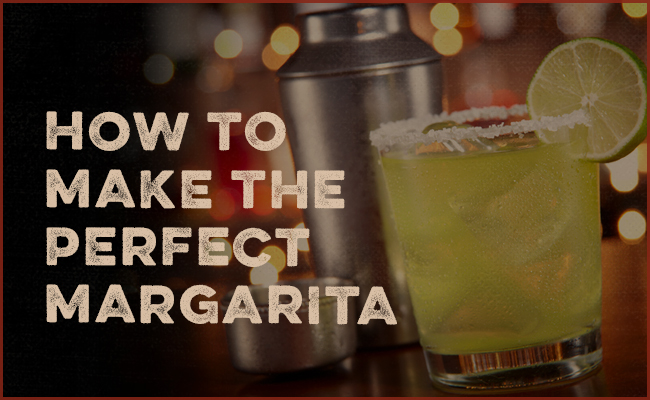It’s always this time of year that summer really starts to drag. We’re still in the midst of late season heat waves, but fall is enticingly close on the calendar.
While a cold beer is always nice, when you’re really over the heat and humidity, something a little stronger provides a nice panacea.
That’s where the margarita comes in: the condensation dripping from the glass onto your hand; that taste of salt which is always a little too strong at first, but then washes with a semi-sweet combination of tequila and orange liqueur to create the perfect meld of flavors; the slightly acidic and puckering finish of fresh lime juice. It can be almost rapturous.
But, in my experience, margaritas tend to taste better at restaurants and bars than at home. So this summer, I set out to make the perfect drink in the comfort of my air-conditioned kitchen. After countless experiments and attempts and culinary “research,†I finally did it.
Below you’ll find not just a recipe, but a full explanatory dossier of what’s needed to build the perfect margarita. As with all things made at home, the ingredients you use are really the key.
The Ingredients You Need for a Perfect Margarita
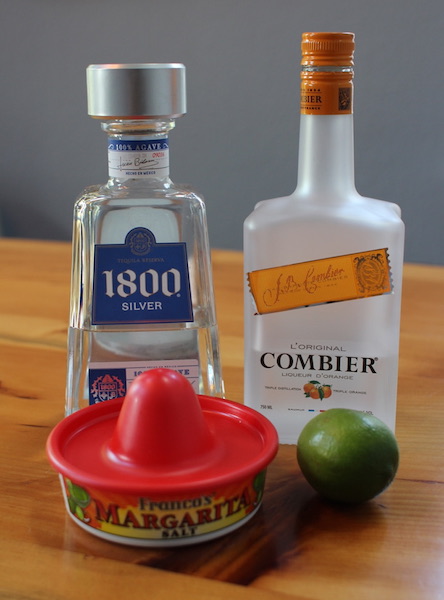
Before even getting to the true ingredients, we first need to cover the structural pieces with which they’ll be surrounded:
Glass. You’ll see margaritas served in all kinds of vessels, from martini glasses to copper mugs to large coupe-style glasses that often are labeled specifically for margaritas. Those first and last options are a bit too feminine for my own style. And while copper mugs do the trick fine, I don’t have any in my collection and don’t see a real need, so I like to use a classic double old fashioned glass. It’s the perfect size for the amount of liquid and ice you’re going to add, whereas the single version ends up being too small.
Salt. At restaurants and bars, margaritas are always served with salted rims. For a long time at home, I had been skipping this step because it always just seemed like a bit of a hassle. When I finally tried it out though, salt became non-negotiable for all future at-home margaritas. It’s such a unique and perfect accompaniment to the tangy sweetness happening within the glass.
You can make your own margarita salt at home, or even just put some flaky kosher salt into a dish. My preference though is to buy a premade margarita salt. It’s usually citrus-infused, comes in a handy container that allows you to dip the glass right in, and is cheap enough and lasts long enough to warrant buying it versus making it at home.
Ice. Large ice ball, regular cubes, crushed . . . what do you go with? For whiskey and other dark spirits, a large ice ball is almost always preferred; it adds some liquor-mellowing water, but slowly. You can really sip a drink when using a large ball or cube. Crushed ice is on the other end of the spectrum, and not often found in drinks/cocktails for a reason: it dilutes your beverage far quicker than you’d generally like. Some liqueurs are best served over crushed ice, but it’s always in small amounts that are meant to be consumed somewhat quickly.
For the margarita, a glass full of your standard cubes is the way to go. It will dilute the drink some (more than a large single chunk), but not too much. It’s a real Goldilocks scenario here. Also, anecdotally, this is how margaritas almost always come when ordered at restaurants (unless you’re getting the slushy version, which you shouldn’t be doing).
Okay, now that we have those things covered, let’s get into the good stuff. The classic premium margarita is just three ingredients: tequila, orange liqueur, and fresh-squeezed lime juice. Let’s take a look at each:
Tequila. A spirit made from blue agave, tequila comes in a variety of distillations and ages (check out my primer on tequila to learn how to read a label and distinguish the different classifications). The key to making a perfect margarita is to choose a high-quality, 100% agave blanco (clear) tequila.
The reason to go with blanco tequilas versus reposado/anejo versions is because you’re going for a more floral, citrusy quality. When sipping tequila by itself, the aged versions give you more notes of oak, vanilla, and even chocolate. While dark tequilas taste fine when made into a margarita, the blend of flavors aren’t as perfectly suited to each other as they are when you use blancos.
Check the label and be sure it’s 100% blue agave; beyond that, the brand and price point are up to you.
Orange Liqueur. This is where things can get confusing, at least in terms of purchasing. The labeling of orange liqueurs is a bit complicated, so I’ll try to make it easy. (For a more in-depth guide, check out this Serious Eats article.) Orange liqueur, which adds a little sweetness to the margarita, is made from the dried peels of oranges and classified as either a curacao or triple sec; these are two branches of the liqueur. For the consumer’s purposes, they aren’t much different. It’s more about the quality and price point of the product than which branch you go with.
Frustratingly, you either have to go top shelf or bottom shelf. There’s not really a middle ground when it comes to orange liqueurs. At the top, you have brands like Grand Marnier (curacao), Cointreau (triple sec), Combier (triple sec), etc. You’re looking at $30 to $40 for a 750ml bottle. It’s a lot to swallow, I know, but it lasts quite a while when using it as the secondary ingredient in margaritas (which is the only drink I’m using mine for). At the bottom end, you get plastic bottles with brightly-colored labels that almost always have “Triple Sec†front and center, rather than the brand name. These will set you back $10 to $15.
It’s tempting to reach for those cheap versions, but don’t do it. They suffice in a pinch, but the drink is noticeably taken up a notch with the high-quality stuff. Even when you use a premium tequila, what you’re going to taste is the low-brow triple sec and not the high-quality spirit. It would be like putting generic caffeine-free diet cola into a Cuba Libre (Coca-Cola, rum, lime juice). Yucko.
Lime Juice. Don’t buy the stuff in the green bottle. Even if it’s not sweetened, it’s just not fresh and invariably tastes different than the real thing. Squeeze a real lime. I like to use a large wedge — usually a full quarter of a standard-sized lime. You need to be able to squeeze out about a full ounce, so a large portion is good. Too much is better than not enough.
The Recipe
Now that we have the lowdown on all the ingredients, we can get to constructing our margarita. The recipe runs as such:
- 2oz blanco tequila
- 1.5oz orange liqueur
- 1oz fresh lime juice
- Margarita salt
1. Salt the rim of your glass.
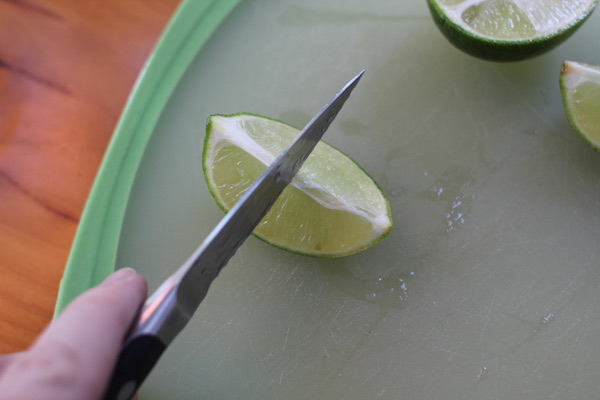
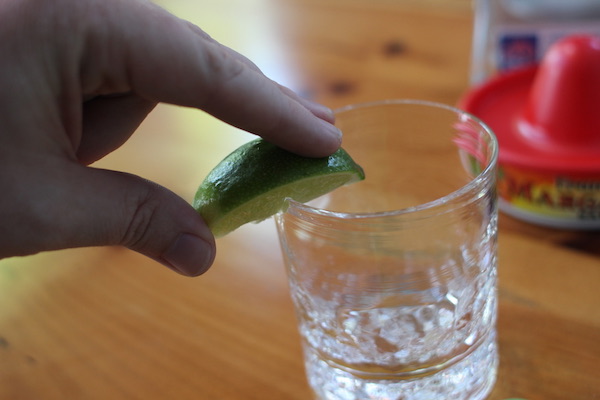
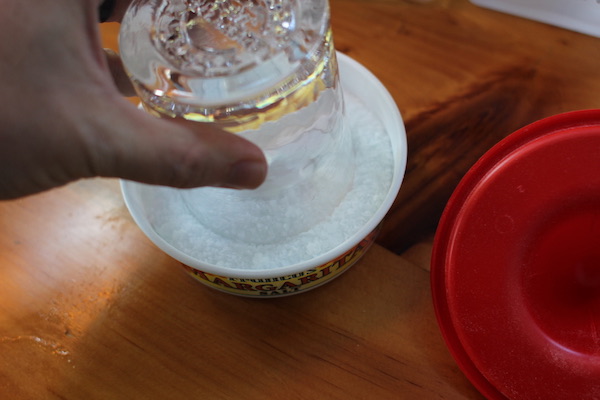
Do this by making a small perpendicular cut in your lime, then using that to wet the rim of the glass. Dip the glass into the salt and give it a twist. It’s possible to get too much salt, but the exact “right†amount comes down to personal preference, so experiment.
2. Fill glass with ice.
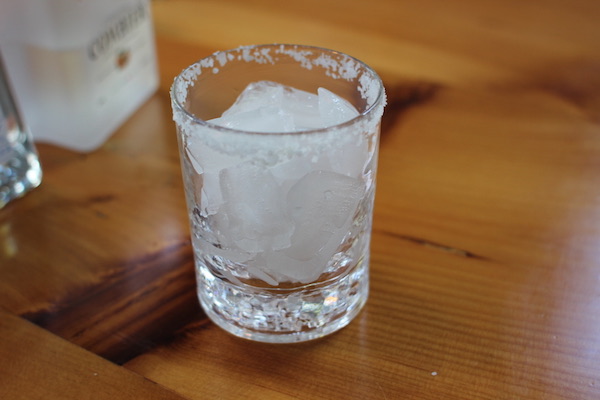
You’ll inevitably lose a little bit of the salt when you add the ice, FYI.
Fill your glass to just below the salted rim with ice cubes. A full glass is better than a half-filled glass.
3. Add tequila and liqueur.
4. Squeeze the lime wedge for all it’s worth and plop it into the drink.

5. Give it a few swirls with a spoon.
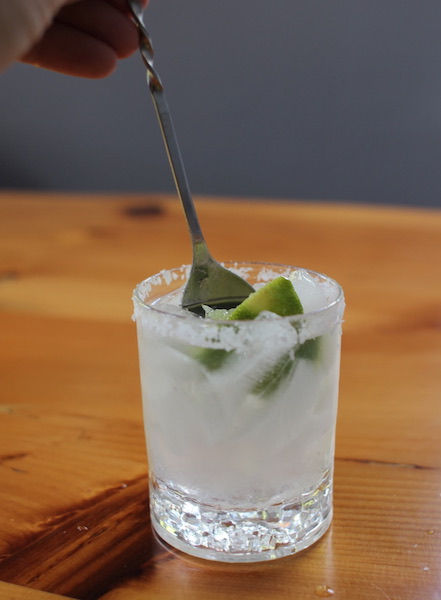
Might as well use a fancy bartender spoon if you have one.
This is to ensure the ingredients are evenly mixed. This is a more important step than you might think. If you don’t do this, you’ll end up with various sips that are tequila-heavy or liqueur-heavy, and it’s a little off-putting. You can use a shaker if you want, but I haven’t found that it makes much of a difference, and it’s more convenient to just use the spoon.
6. Sip and enjoy! Make sure to get some salt with each sip you take. Once I get down to the last few sips, I like to top it off with just a little more tequila for a strongly-flavored finish.
Tags: Vices

